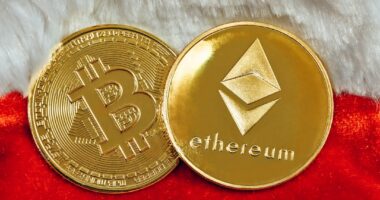Non-fungible tokens (NFTs) are unique digital assets that represent ownership or proof of authenticity of specific digital items or content, such as artwork, videos, music, or tweets. Unlike fungible cryptocurrencies like Bitcoin or Ethereum, NFTs cannot be exchanged on a one-to-one basis due to their unique nature. NFTs are typically built using blockchain technology, a decentralized and distributed digital ledger that records immutable transactions across multiple computers.
To create an NFT, artists or content creators use online platforms to “mint” their digital work into a token. This process involves uploading the digital file to a blockchain network and generating a unique token representing ownership of the work. Once created, NFTs can be bought, sold, or traded on various online marketplaces supporting NFT transactions.
Each NFT contains metadata providing information about the digital asset it represents, including the creator’s name, a description of the work, and the creation date. This metadata is stored on the blockchain and can be publicly verified, ensuring the authenticity and provenance of the digital asset. When an NFT is bought or sold, the transaction is recorded on the blockchain, providing a transparent and immutable record of ownership.
NFTs utilize blockchain technology to represent ownership or proof of authenticity of digital content. They are created by minting digital files into tokens on a blockchain network and can be traded on online marketplaces. The use of blockchain ensures transparency and security, making NFTs an innovative method for buying, selling, and collecting digital art and other content.
NFTs as an Investment: Potential Risks and Rewards
Potential Rewards of Investing in NFTs
As NFTs continue to gain popularity, many investors are looking at them as a potential investment opportunity. Investing in NFTs can offer the potential for significant returns, especially if the value of the digital assets represented by the NFTs increases over time. Some NFTs have sold for millions of dollars, making them an attractive investment option for those looking to capitalize on the growing market for digital art and collectibles. Additionally, NFTs can provide artists and content creators with a new way to monetize their work, potentially increasing the value of their creations in the long run.
Risks Associated with Investing in NFTs
However, investing in NFTs comes with its own set of risks. The market for NFTs is still relatively new and can be highly volatile, with prices fluctuating dramatically based on trends and speculation. There is also the risk of investing in counterfeit or stolen NFTs, as the decentralized nature of blockchain technology can make it difficult to verify the authenticity of certain digital assets. Furthermore, there is a lack of regulation in the NFT market, which can make it challenging for investors to navigate and protect their investments.
Approaching NFT Investments with Caution
It’s important for anyone considering investing in NFTs to conduct thorough research and due diligence to understand the potential risks and rewards before making any investment decisions. In conclusion, investing in NFTs can offer the potential for significant returns and provide artists with new opportunities to monetize their work. However, it’s important for investors to be aware of the potential risks associated with NFTs, including market volatility, authenticity verification, and regulatory challenges. As with any investment, it’s crucial to approach NFTs with caution and to seek professional advice if needed.
NFTs and the Art World: Impact on Artists and Collectors

The rise of NFTs has had a profound impact on the art world, offering new opportunities for artists and collectors alike. For artists, NFTs provide a way to monetize their digital creations in a way that was previously not possible. By minting their artwork as NFTs, artists can sell their work directly to collectors without the need for intermediaries such as galleries or auction houses.
This direct-to-consumer model allows artists to retain more control over their work and potentially earn higher profits from their sales. Additionally, NFTs can provide artists with ongoing royalties each time their work is resold on the secondary market, creating a new source of passive income that was previously unavailable in the traditional art market. For collectors, NFTs offer a new way to invest in and own digital art and collectibles.
By purchasing NFTs representing digital artwork, collectors can establish ownership and provenance of the pieces they acquire, just as they would with physical art. This has opened up a whole new market for art enthusiasts who may not have had access to traditional art markets due to geographical or financial constraints. Furthermore, NFTs have introduced a level of transparency and authenticity verification that was previously lacking in the digital art world, providing collectors with greater confidence in their purchases.
In summary, NFTs have revolutionized the art world by providing artists with new opportunities to monetize their work and offering collectors a new way to invest in and own digital art and collectibles. The direct-to-consumer model of selling NFTs has empowered artists to retain more control over their work and potentially earn higher profits from their sales. Meanwhile, collectors have gained access to a new market for digital art with increased transparency and authenticity verification.
NFTs in the News: Recent Developments and Trends
| Date | Event | Impact |
|---|---|---|
| May 2021 | Christie’s auction of Beeple’s NFT artwork for 69 million | Increased mainstream interest in NFTs |
| June 2021 | NFT marketplace OpenSea’s surge in trading volume | Growing popularity of NFT trading |
| July 2021 | NBA Top Shot NFT platform’s record sales | Rising demand for sports-related NFTs |
NFTs have been making headlines across various industries in recent years, with several notable developments and trends shaping the market. One significant trend is the growing interest from celebrities and public figures in creating and selling their own NFTs. From musicians releasing exclusive albums as NFTs to athletes tokenizing memorable moments from their careers, high-profile individuals are leveraging NFTs as a new way to engage with their fan base and monetize their digital content.
This trend has brought increased attention to the potential of NFTs as a tool for marketing and fan engagement. Another notable development is the integration of NFTs into virtual worlds and metaverse platforms. Companies like Decentraland and The Sandbox are incorporating NFTs into their virtual environments, allowing users to buy, sell, and display digital assets within these immersive online spaces.
This has created new opportunities for artists and content creators to showcase their work in virtual galleries and for users to interact with digital art in unique ways. Additionally, brands and businesses are exploring ways to use NFTs within virtual worlds as a means of marketing and brand promotion. Furthermore, there has been a growing focus on sustainability within the NFT space, with initiatives aimed at reducing the environmental impact of blockchain technology.
As concerns about the carbon footprint of NFTs have gained attention, there has been an increased emphasis on exploring more eco-friendly alternatives for minting and trading NFTs. These developments reflect a broader shift towards addressing environmental concerns within the blockchain and cryptocurrency space. In conclusion, recent developments and trends in the world of NFTs have included increased interest from celebrities and public figures, integration of NFTs into virtual worlds, and a growing focus on sustainability within the industry.
These developments highlight the evolving nature of the NFT market and its potential for innovation across various sectors.
NFTs and Job Opportunities: Careers in the NFT Industry
The rise of NFTs has created new job opportunities across various sectors within the digital economy. One area that has seen significant growth is that of blockchain developers and engineers specializing in NFT technology. These professionals play a crucial role in building and maintaining the infrastructure that supports NFT transactions, including creating smart contracts for minting NFTs, developing secure marketplaces for trading digital assets, and implementing solutions for scalability and interoperability within blockchain networks.
Another area of opportunity is in digital marketing and community management for NFT projects and platforms. As more artists, brands, and businesses enter the NFT space, there is a growing demand for professionals who can help promote and manage these digital assets effectively. This includes roles such as social media managers, content creators, and community moderators who can engage with audiences and build communities around specific NFT projects.
Additionally, there are opportunities for legal professionals specializing in blockchain technology and intellectual property law to provide guidance on issues related to copyright, licensing, and ownership rights within the NFT space. As the regulatory landscape around NFTs continues to evolve, there is a need for legal expertise to navigate complex legal challenges related to digital assets. In summary, the rise of NFTs has created new job opportunities across various sectors within the digital economy, including roles in blockchain development, digital marketing, community management, and legal services.
As the NFT market continues to grow and evolve, there will be increasing demand for professionals with expertise in these areas to support the continued expansion of the industry.
NFTs and Environmental Concerns: The Carbon Footprint of NFTs

Carbon Footprint Concerns
One of the most significant criticisms of NFTs is their environmental impact, particularly in relation to their carbon footprint. The process of minting an NFT involves complex cryptographic calculations that require significant computational power, leading to high energy consumption. This has raised concerns about the environmental sustainability of NFTs and their contribution to carbon emissions.
Towards Sustainable Alternatives
To address these concerns, there has been a growing focus on exploring more sustainable alternatives for minting and trading NFTs. Some blockchain networks are actively working towards implementing solutions that reduce energy consumption by transitioning from proof-of-work (PoW) consensus mechanisms to more energy-efficient proof-of-stake (PoS) or proof-of-authority (PoA) models. These alternative consensus mechanisms require significantly less computational power, resulting in lower energy consumption and reduced carbon emissions.
Offsetting Carbon Emissions
Furthermore, there are initiatives aimed at offsetting the carbon footprint of NFT transactions through carbon credits or donations to environmental causes. Some platforms have implemented features that allow users to contribute towards carbon offsetting when minting or trading NFTs as a way to mitigate their environmental impact.
NFTs and the Future of Digital Ownership: Implications for Investors and Consumers
The rise of NFTs has sparked discussions about the future of digital ownership and its implications for investors and consumers. With blockchain technology enabling transparent ownership records and provenance verification for digital assets represented by NFTs, there is potential for a paradigm shift in how we perceive ownership in the digital age. For investors, this means having a new asset class that offers unique opportunities for diversification within their investment portfolios.
The ability to invest in digital art, collectibles, virtual real estate, or other tokenized assets through NFTs provides investors with access to markets that were previously inaccessible through traditional investment vehicles. For consumers, owning an NFT represents more than just owning a digital file; it signifies ownership of a unique piece of content with verified authenticity on a decentralized ledger. This has implications for how we consume digital content in various forms – from art and music to virtual goods within online environments – as it introduces new possibilities for ownership rights in the digital realm.
In summary, the rise of NFTs has implications for both investors and consumers in terms of redefining digital ownership rights. As blockchain technology continues to enable transparent ownership records for digital assets represented by NFTs, we are witnessing a shift towards new opportunities for investment diversification and reimagining how we perceive ownership in the digital age.
If you’re considering investing in NFTs, you may want to check out this article on NFT-Jobs.com that discusses the potential of NFTs as a good investment. The article provides insights into the current NFT market and offers valuable information for those looking to enter the NFT space. Check it out here for a comprehensive overview of NFT investment opportunities.
FAQs
What is an NFT?
NFT stands for non-fungible token, which is a digital asset that represents ownership or proof of authenticity of a unique item or piece of content, such as artwork, music, videos, or collectibles, using blockchain technology.
Is NFT a good investment?
The value of NFTs can be highly speculative and volatile, making them a risky investment. While some NFTs have sold for significant amounts, there is no guarantee of future value appreciation. It is important to thoroughly research and understand the NFT market before considering it as an investment.
What are the risks of investing in NFTs?
Some of the risks associated with investing in NFTs include market volatility, lack of regulation, potential for fraud and scams, and the possibility of the value of NFTs decreasing over time. Additionally, the NFT market is relatively new and can be influenced by trends and hype.
What factors should be considered before investing in NFTs?
Before investing in NFTs, it is important to consider factors such as the underlying value and uniqueness of the digital asset, the reputation of the creator or artist, the demand for the NFT, the potential for future value appreciation, and the overall market trends.
Are there any advantages to investing in NFTs?
Some potential advantages of investing in NFTs include the ability to support artists and creators, the potential for unique and exclusive ownership of digital assets, and the opportunity to participate in a growing and innovative market. However, it is important to approach NFT investments with caution and due diligence.





